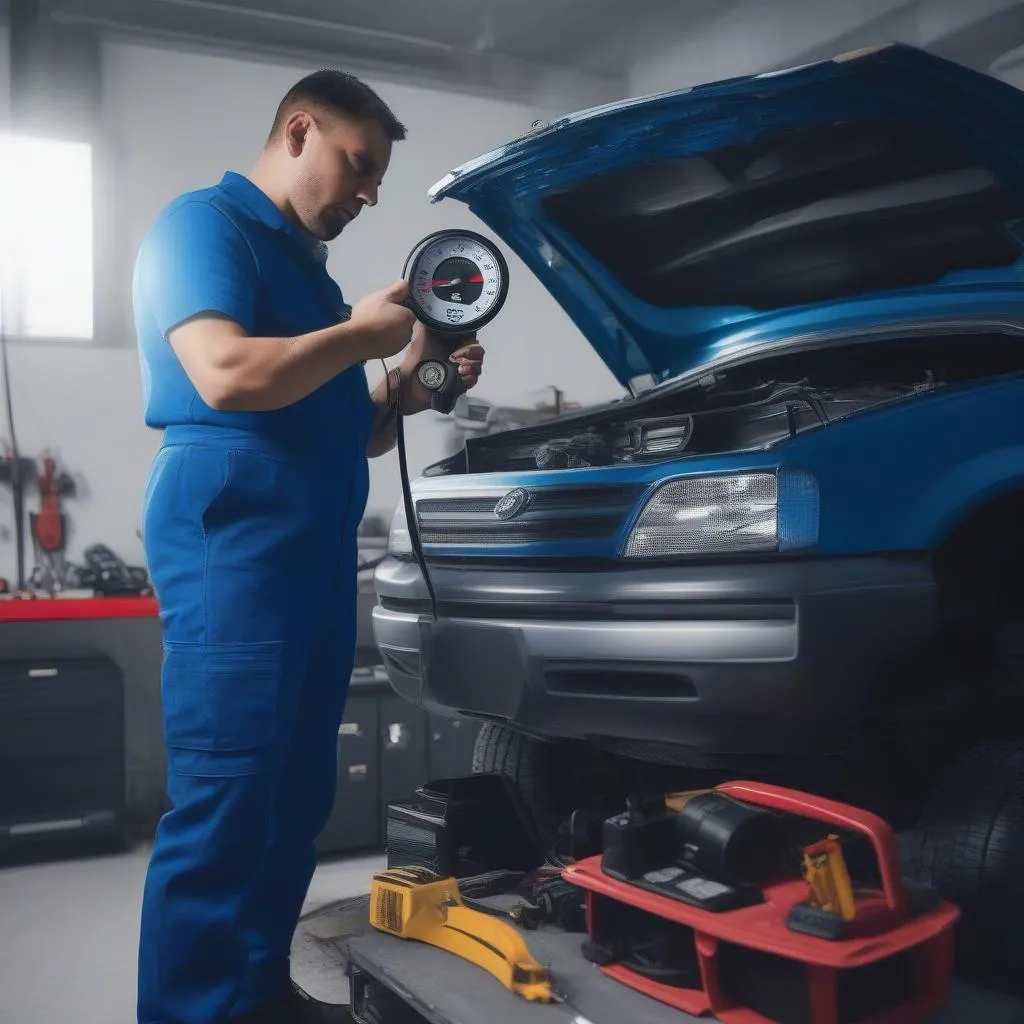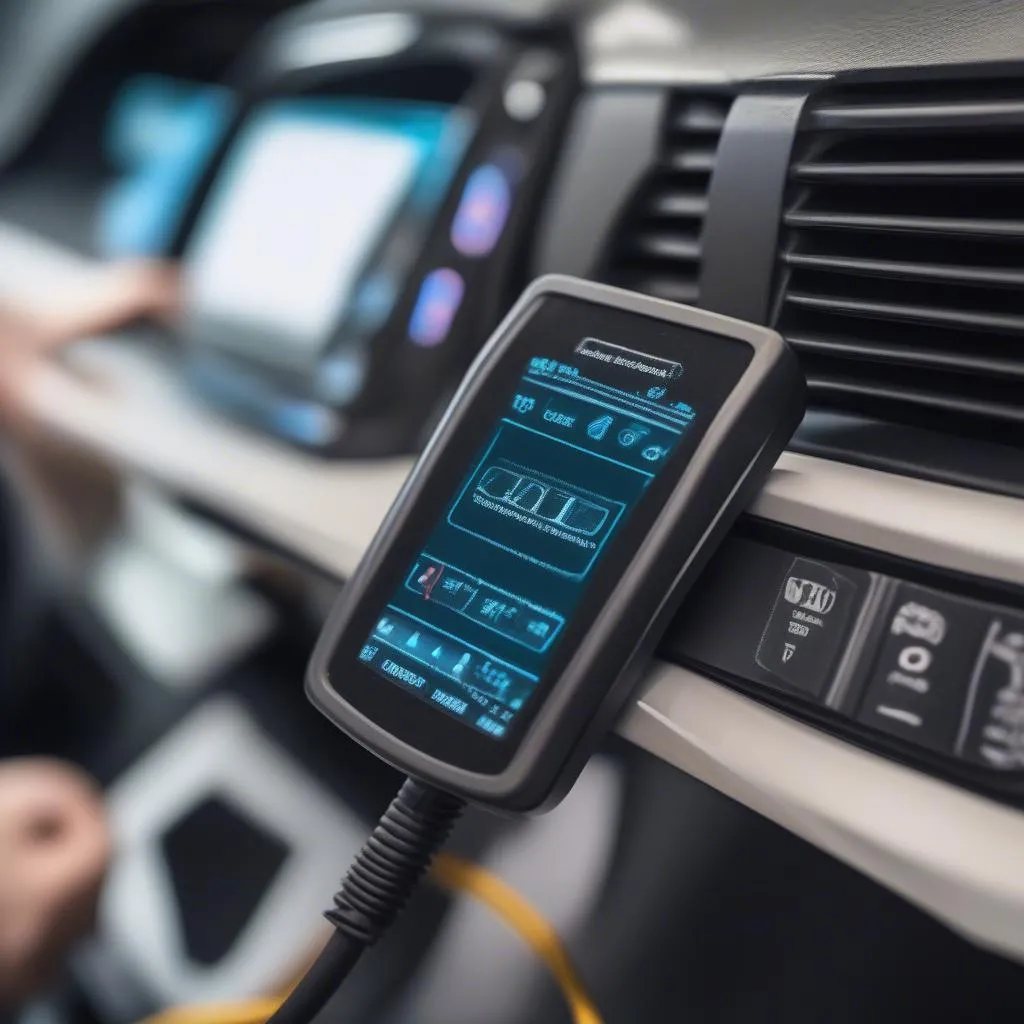Is your 1999 Mercedes C280’s air conditioner blowing hot air? Don’t sweat it! This comprehensive guide will walk you through the common reasons behind AC issues in this model and provide a simplified approach to diagnosing and potentially fixing the problem yourself.
Common Causes of AC Problems in a 1999 Mercedes C280
Before you break out the tools, it’s crucial to understand what might be causing your AC woes. Here are the most common culprits in a 1999 C280:
- Refrigerant Leak: Over time, the refrigerant in your AC system can leak out, leading to reduced cooling performance.
- Faulty Compressor: The compressor is the heart of the AC system, and if it’s not working correctly, the system won’t be able to circulate refrigerant.
- Electrical Issues: Problems with wiring, fuses, relays, or the AC control unit can disrupt the electrical signals needed for the system to function.
- Clogged Condenser or Evaporator: Debris and dirt can accumulate on the condenser (located at the front of the car) or evaporator (inside the dashboard), hindering heat exchange.
- Blend Door Actuator Malfunction: This actuator controls the blend door that directs airflow. If it fails, you might get stuck with heat even when the AC is on.
Identifying the Specific AC Issue
Pinpointing the exact cause requires a bit of investigation:
- Check for Cool Air: Start the car, turn on the AC, and feel for cool air coming from the vents. If there’s no change in temperature or the air is only slightly cool, it could indicate a refrigerant leak or a compressor issue.
- Listen for Unusual Noises: Strange sounds like clicking, hissing, or grinding when the AC is on could be signs of a failing compressor or other component issues.
- Inspect the Fuses and Relays: Consult your owner’s manual to locate the AC-related fuses and relays. A blown fuse is a clear indicator of an electrical problem.
- Visually Inspect the Condenser: Check the condenser for any visible damage, blockage from debris, or bent fins.
Essential Tools for DIY AC Repair
Feeling handy? Here are some tools you might need to tackle AC repairs:
- Refrigerant Leak Detector: This tool helps pinpoint refrigerant leaks.
- Manifold Gauge Set: Used to check the pressure of the refrigerant in the system.
- Vacuum Pump: Essential for removing air and moisture from the AC system before recharging refrigerant.
- Refrigerant: Purchase the correct type of refrigerant for your C280 (check the label under the hood or consult your owner’s manual).
- Basic Hand Tools: Screwdrivers, wrenches, pliers, etc., will come in handy for various tasks.
Troubleshooting and Repair Steps
Important: Working with AC systems involves potentially hazardous materials. If you’re not comfortable working with these components, it’s best to seek professional help.
- Address Refrigerant Leaks (if applicable): If a leak is detected, you’ll need to locate and repair the leak before recharging the system.
- Check and Replace Fuses/Relays: If you identify a blown fuse or faulty relay, replace it with a new one of the same amperage.
- Inspect and Clean the Condenser: Carefully remove any debris obstructing the condenser. Straighten any bent fins using a fin comb.
- Consult a Professional: For complex issues like compressor replacement or electrical diagnostics, it’s safest to consult a qualified mechanic.
 Mechanic checking car AC
Mechanic checking car AC
Frequently Asked Questions
Q: Can I use a refrigerant recharge kit from an auto parts store?
A: While recharge kits are available, it’s generally not recommended to use them without proper diagnosis. Overcharging the system can cause damage.
Q: How often should I have my car’s AC system serviced?
A: It’s advisable to have your AC system inspected and serviced every 1-2 years, or as recommended in your vehicle’s maintenance schedule.
Q: Can a faulty AC affect my car’s engine?
A: In some cases, a malfunctioning AC compressor can put extra strain on the engine, potentially affecting performance.
Q: What is a Cardiagtech scanner, and can it help with AC problems?
A: A CARDIAGTECH scanner is an automotive diagnostic tool that can read and clear trouble codes from your car’s computer system, including those related to the AC. While it can be helpful for identifying electrical issues, it may not pinpoint all AC problems. You can find a suitable CARDIAGTECH scanner for your Mercedes here.
 Car diagnostic tool plugged into a car's OBD port
Car diagnostic tool plugged into a car's OBD port
Conclusion
A malfunctioning AC system can make driving your 1999 Mercedes C280 uncomfortable, especially during hotter months. While some repairs might be manageable for DIY enthusiasts, it’s often best to leave complex diagnostics and repairs to qualified mechanics. Regular maintenance and prompt attention to any AC issues can help keep your car cool and comfortable for years to come.

